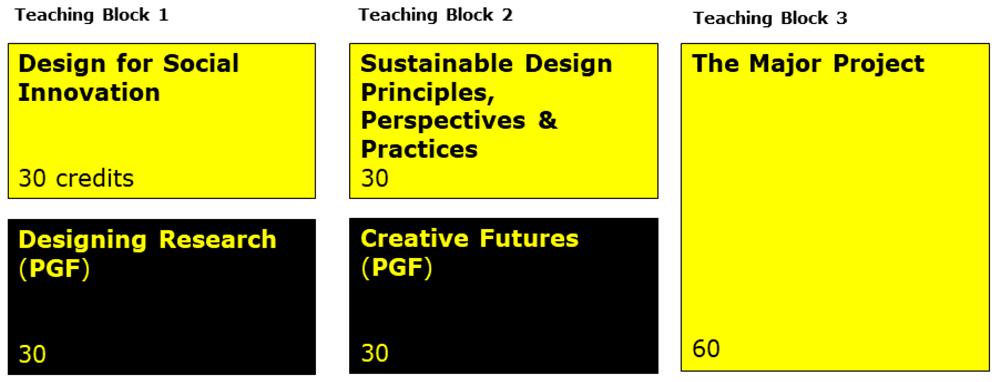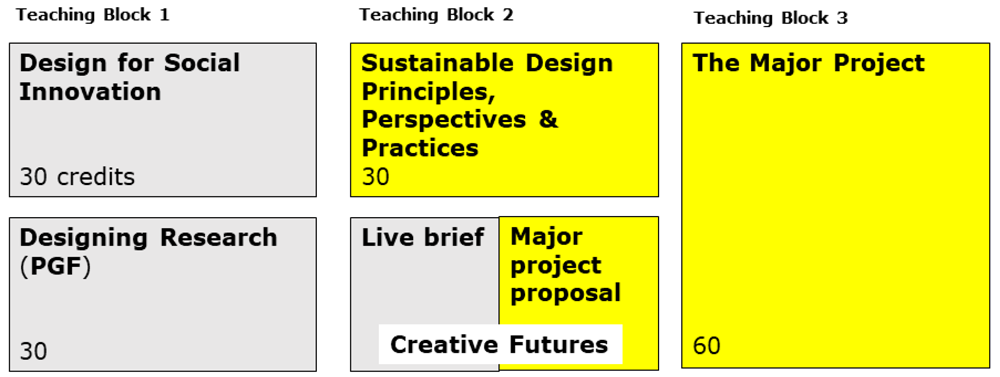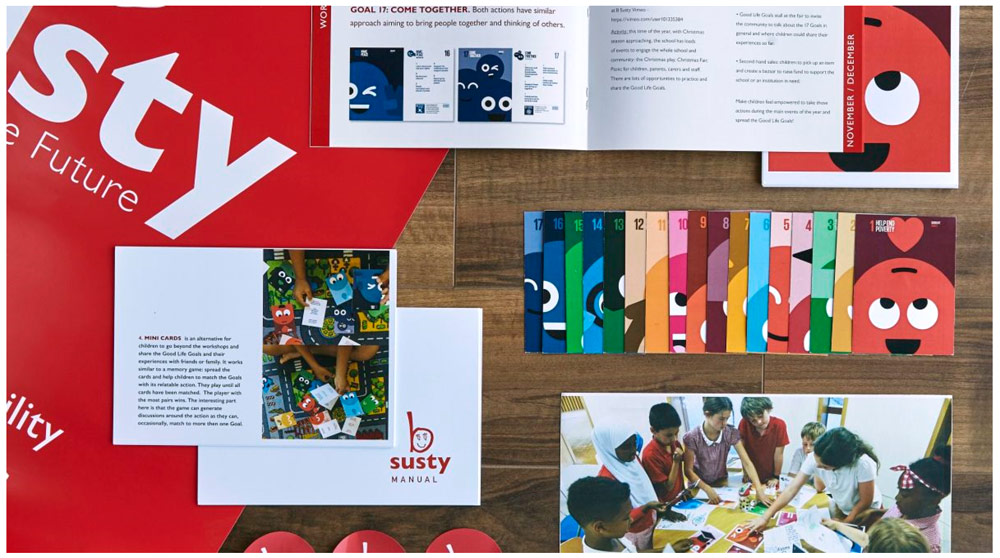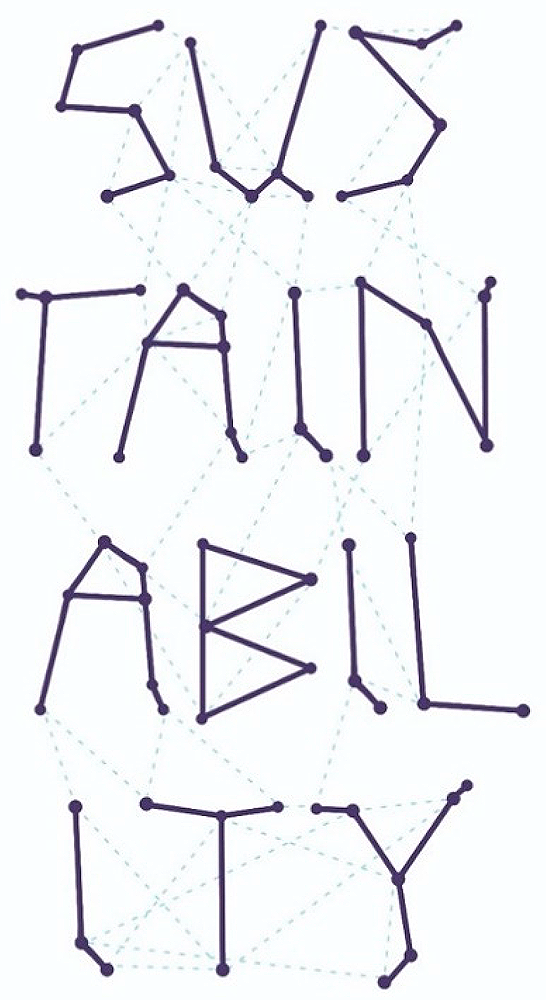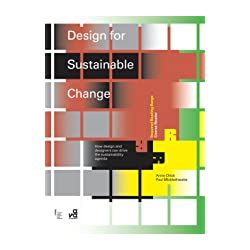Abstract
This paper examines student learning in the Master of Arts in Sustainable Design course at Kingston School of Art, Kingston University London. It considers what designers learn, how they learn and where they learn, in a postgraduate course that seeks to enable them to direct their practice towards sustainability by increasing their sustainability literacy. The paper reviews the learning experiences of students, and the curriculum structures and approaches used to serve those experiences. The story of the course is told here by the course leader of ten years, using student outputs to illustrate the argument made for a sustainable design pedagogy. The key principles of this pedagogy are
(1) sustainability is a social, not just an environmental, agenda;
(2) sustainability presents us with ‘wicked problems’, which have no right or wrong answers;
(3) sustainability-directed design practice arises from the sustainability literacy of the designer;
(4) sustainability derives from mindsets and worldviews, not just methods and materials; and
(5) sustainability is an emergent property of systems, not a quality of products.
This combination has generated a distinctive model of postgraduate sustainable design education, which seeks to equip students with a ‘mastery’ of how to put into practice their own visions of sustainable design.
1. Introduction
New guidance jointly published in March 2021 in the UK by the two independent bodies QAA and Advance HE is a significant contribution to the challenge of how higher education institutions can incorporate Education for Sustainable Development within their curricula.
“Education for Sustainable Development (ESD) equips learners across all disciplines with the knowledge, skills, attributes and values required to pursue sustainable visions of the future. Using active pedagogies learners are supported in addressing complex or ‘wicked problems’ and identifying how they can contribute to solutions that address environmental integrity, social justice and economic prosperity”.[1]
This new guidance is an expression of the dominant approach of Higher Education for Sustainable Development (HEfSD), which is based on implementation of the United Nations Sustainable Development Goals (SDGs) [2].
Twenty years earlier, Stephen Sterling advocated a different model of ‘sustainable education’: “sustainable education is essentially transformative, constructive, and participatory …” [3] (p. 35). Sterling’s model presents four progressive levels of learning in response to sustainability: (1) no response (ignorance/denial/no learning); (2) accommodatory response (adaptive learning, paradigm unchanged); (3) reformatory response (reflective adaptive learning, paradigm modified); and (4) transformative response (critical and creative learning, changing paradigm) [3] (p. 11). For Sterling, this conception of ‘sustainable education’ allows a deeper engagement with sustainability than is possible in the more common notion of ‘education for sustainability’. He also makes a clear distinction between ‘sustainability’ and ‘sustainable development’ in this context, objecting to ESD’s focus on serving the problematic notion of development.
Sustainability has also been identified as one of a set of ‘transversal competences’ that are relevant to all subject areas. The challenge is, then, how to ensure it is addressed in subject-based education. “How to develop these transversal competences and, at the same time, comply with the specific competences of each subject has been a recurrent objective in higher education” [4] (p. 1). This article examines the current state of pro-sustainability education in universities, specifically in the field of design. This is done via consideration of the MA Sustainable Design course at Kingston School of Art, Kingston University London, of which the author has been the course leader for ten years.
2. Pro-Sustainability Design Education
Ceschin and Gaziulusoy [5] have mapped out progressive phases of pro-sustainability design theory and practice. They categorise the design approaches developed in recent decades in terms of four innovation levels: Product, Product-Service System, Spatio-Social and Socio-Technical System. These levels form an evolutionary framework within which are positioned various pro-sustainability design approaches. “The proposed framework synthesizes the evolution of the DfS field, showing how it has progressively expanded from a technical and product-centric focus towards large scale system level changes in which sustainability is understood as a sociotechnical challenge” [5] (p. 118) (Figure 1). In more familiar terms, the framework presents a timeline over which we see a progression from a green design, to ecodesign, to product service system design, to design for social innovation and sustainability, to design for systemic transitions. This progression in how we theorise about, and to a lesser extent practice, pro-sustainability design has to some extent been mirrored by design education. Yet this has been with an inevitable time lag, as new conceptions and approaches take time to spread, and an unevenness in distribution, as simpler, older conceptions take time to become dislodged in educational practices. As result, whilst design research has pioneered ever-deepening engagements with sustainability, design education has been slow to follow suit. Product-based approaches to pro-sustainability design remain the most common. This is because they are the easiest to teach for tutors, and the simplest to execute for students. We all have to start at the beginning when we are learning, of course, but the potential for designers to move individually and collectively through the stages of the Design for Sustainability Evolutionary Framework presented in Figure 1 remains largely unfulfilled.
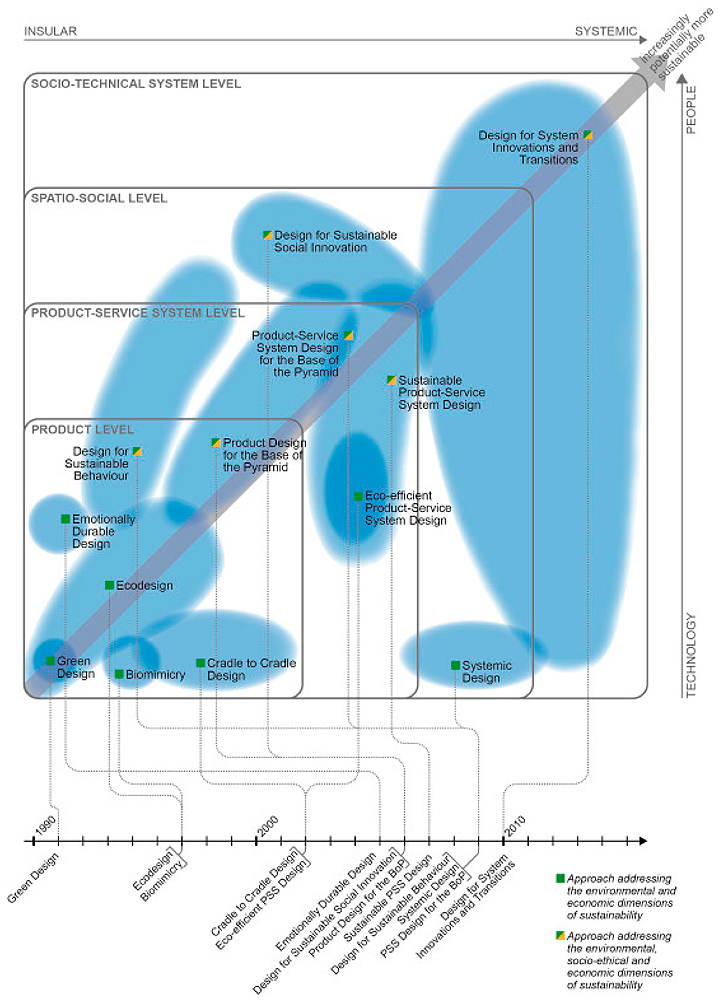
Figure 1. The Design for Sustainability Evolutionary Framework, in Ceschin and Gaziulusoy [5] (p. 144), showing the year of the first key publication of each approach.
We now realise that product-based approaches to designing for sustainability are largely futile if they fail to address the unsustainability of the system by which they are produced and consumed. This is exemplified by the myth of ‘sustainable materials’. No material is inherently sustainable; rather, sustainability is a potential quality of the ways in which we use materials, taking into account relative product and material lifespans and any differences between them. Designing for sustainability is not, therefore, about designing sustainable things, but designing to enable sustainable ways of living, and designing social and technical systems that can allow that. Explicitly pro-sustainable design university degree courses usually have a product, communication or architectural design background, and are delivered by specialists in that design domain. Their student outputs are therefore usually expressions of existing disciplinary approaches. However, the most advanced examples of pro-sustainability design education may actually be found in the newer subjects of service design and design for social innovation, both of which focus on systems and people, rather than products and consumers. These two subjects are non-disciplinary, in design terms, in that they do not require their practitioners to deliver specific types of output, nor to come from a specific type of design practice. They focus on organising existing resources, both human and non-human, to deliver value to the identified beneficiaries, and are therefore free of the fetishization of style, which is a feature of much unsustainable design. There is great potential value in directing service design and design for social innovation towards sustainability, accommodating the full diversity of design disciplines.
Greater pro-sustainability in design is likely to come from greater sustainability literacy in designers.
“Sustainability Literacy … can be defined as the knowledge, skills, and mindsets that help compel an individual to become deeply committed to building a sustainable future and allow him or her to make informed and effective decisions to this end”.
This is distinct from technical knowledge. Just as literacy in a language is demonstrated by an ability to use that language to communicate, literacy in sustainability is demonstrated by an ability to apply an understanding of sustainability to real world situations. It is this ability to apply sustainability knowledge that we need more of, rather than just a technical understanding of frameworks such as the UN SDGs. As has been said in relation to the leading test of sustainability literacy: “’knowledge about the challenges’ does not mean ‘knowledge of possible courses of responsible and ethical action’“ [6] (p. 151).
Crucially, sustainability also requires a broadening of conventional notions of expertise and specialisation:
“As Sustainable Development is by nature complex and transversal, achieving sustainability literacy requires multidisciplinary approaches and exploration not only of various themes (e.g., soil quality, forest health, social inclusion, etc.) within sustainable development but also the interconnectedness of these themes”.
[6] (p. 141)
The terms in which these authors discuss sustainable development apply equally to the broader notion of sustainability.
The virtue of an agnostic approach to disciplines lies in its freedom from the restrictions of established ways of doing things, and therefore greater capacity to innovate. On a product design course, for example, the solution to any problem is going to be a product. That will be the inevitable result of the ways in which design opportunities are initially framed, and how responses to those opportunities are then directed. LifeStraw, “a personal mobile water-purification tool”, is a product responding to consumption of unsafe drinking water [7] (p. 106). Whilst invaluable in the absence of a safe water supply, LifeStraw is a classic ‘end-of-pipe’ solution, and does not address the systemic challenges that contribute to the problem it addresses. Product design cannot on its own resolve issues such as absence of safe drinking water. Such wicked problems require complex responses, and the cultivation of generalists able to synthesise different specialisms. Specialist, single-discipline approaches to wicked problems will not resolve them, and often reproduce previous errors.
The MA Sustainable Design course at Kingston School of Art, Kingston University London, seeks to deliver a pro-sustainability pedagogy for students who all have some form of existing creative practice. An effective course title indicates the territory occupied by a course. The complexity of a subject area can then be unpacked on the course. Problematizing ‘sustainable design’ is one of the key concerns of the MA Sustainable Design. The course is centrally concerned with how we frame sustainability, and our attempts to achieve it through design. A better title might therefore be MA Sustainability Design, which could also be an alternative title for the Design for Sustainability Evolutionary Framework in Figure 1. ‘Sustainable Design’ implies that we seek to make design, and students’ existing design practice, ‘sustainable’. We instead seek to enable students to contribute to designing sustainability itself, by first developing their own vision of sustainable change, and then designing routes to achieving that vision. This is a transition from sustainable design to design of sustainability.
The following sections consider the MA Sustainable Design at Kingston School of Art in terms of what designers learn, how they learn and where they learn, in a postgraduate course that seeks to enable them to direct their practice towards sustainability goals.
3. The Learning Journey
The modular structure of the MA Sustainable Design is shown in Figure 2. Modules shown in black are shared with other Design Masters courses within the Faculty, within the structure of a Postgraduate Framework (PGF). Whilst membership of this course family has changed over time, with some courses leaving to pursue a more discipline-based approach, it enables inter-course collaboration on shared projects, which yields clear learning benefits. Membership of the PGF is a distinctive feature of the MA SD, and a clear attraction to prospective students.
Figure 2. MA Sustainable Design course structure, showing the modules and credit values.
Teaching Block 1 includes the two foundational modules of the course, in which students develop their capabilities and identities as designer-researchers. Both modules focus on introducing a range of research methods, which students then use to develop a design output that responds to a set brief. The learning journey on these modules is highly structured, often with tasks to be completed week to week. The learning outcomes look to reward the rationale as much as the degree of resolution of the output. Teaching Block 1, therefore, equips students with the methods they will need in the following modules, which give them greater autonomy in terms of topic and approach.
Teaching Block 2 contains the key ‘theory’ module of the course, Sustainable Design Principles, Perspectives and Practices. Here we explore the fundamental question: What is sustainable design? Students are introduced to a wide range of responses to this question, which may conflict with each other. Each student is therefore required to navigate their own route through the complexity of the field of sustainable design, developing their own response to its key foundational question. This module is in the middle of the course, and not at the beginning, as it is informed by students’ experiences of the earlier practice-oriented modules. Students are also able to undertake required preparatory reading over the university winter break. Alongside this module, students develop a personal proposal for the major project to be completed in Teaching Block 3, and a design-based live brief or competition brief within the Postgraduate Framework.
The major project is the culmination of the student journey, and often emerges from earlier projects on the course. The ‘three Ps’ module often does theoretical work that provides a platform for creative responses to the same topic in a major project. Including the proposal for a major project, 50% of the student experience is therefore often directly comprised of preparing for and completing the major project, with the modules in Teaching Block 1 providing the methodological foundation for the ‘capstone’ project (Figure 3).
Figure 3. 50% of the student experience (in yellow) is often comprised of preparing for and completing the major project.
A course does not exist only on paper, however, but is brought to life by its students’ learning experiences. Figure 4 shows the course’s common experiential learning journey. This journey is not always easy, with initial optimism often followed by a mid-point trough in which students struggle to maintain their confidence to address sustainability, having realized the complexity and challenge of seeking to do so. This is an inevitable result of taking sustainability seriously, and perhaps for the first time grasping the deeply embedded unsustainability within society, industry, and design itself. The course design, however, seeks to provide students with an exit velocity that allows them to reach their next intended destination.
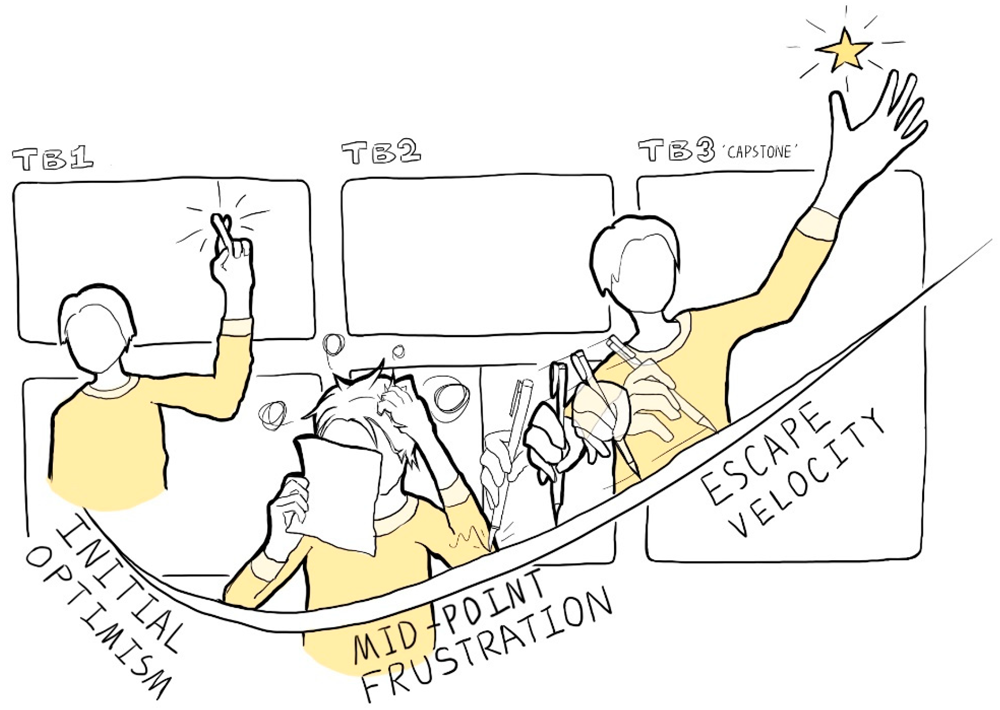
Figure 4. MA Sustainable Design learning journey: initial optimism is succeeded by a mid-point trough, with a final build-up of escape velocity. Image: Di Ba.
For students returning to education, the course provides an opportunity to pause and pivot, to identify a new direction of travel and design a route via the projects done for the course modules. This is demonstrated by one student’s journey in a set of three illustrations showing what she did before, during and after the MA Sustainable Design (Figure 5, Figure 6 and Figure 7). Maria entered the course with a commercial and object-focused approach to design for sustainability. This broadened into a socially led, service-based approach, which continues in Maria’s new profession as a service designer in the public sector, alongside related doctoral research. Maria’s journey demonstrates the transformative potential of the course in enabling a product designer to become a service designer, and move into a new professional context, and thereby become better able to address a persisting concern with sustainability in relation to children’s products.
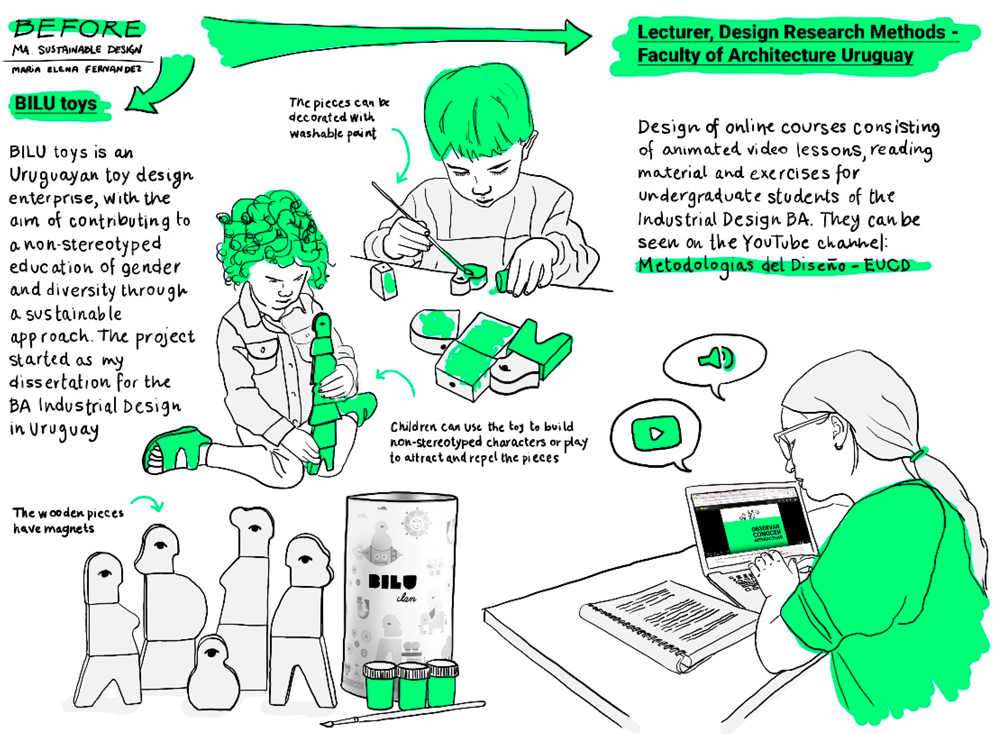
Figure 5. One student’s journey before the MA Sustainable Design. Image: Maria Marinovic.
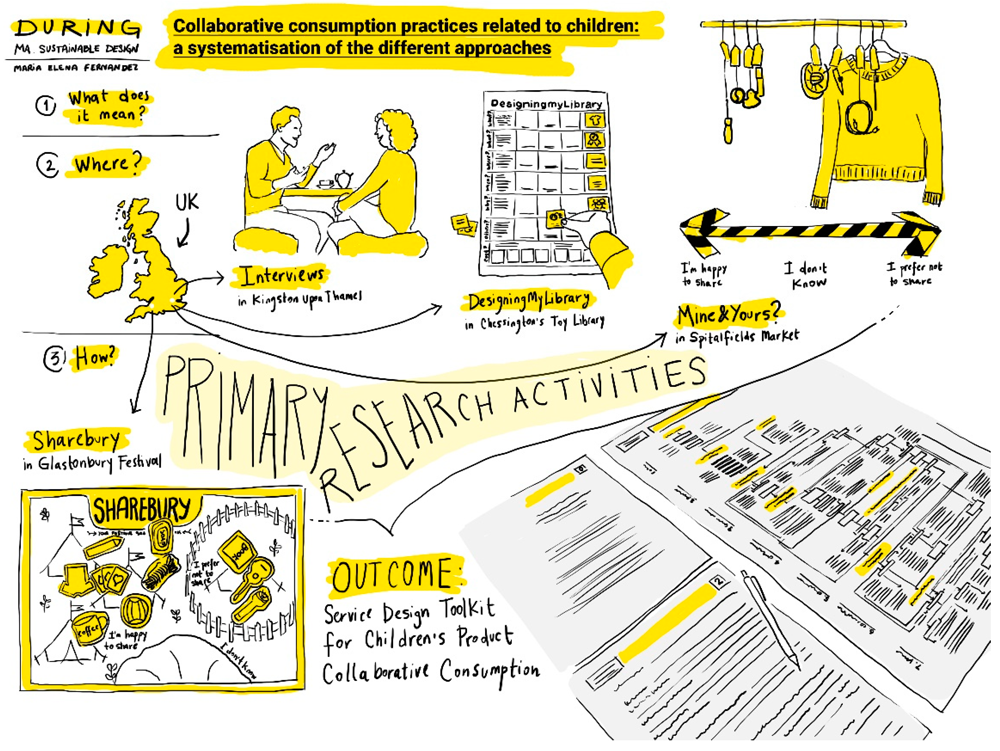
Figure 6. One student’s journey during the MA Sustainable Design. Image: Maria Marinovic.

Figure 7. One student’s journey after the MA Sustainable Design. Image: Maria Marinovic.
4. What Students Learn
MA Sustainable Design has a number of core principles, where some of them were there from the start while others have emerged over time.
4.1. Sustainability Is a Social, Not Just an Environmental, Agenda
A mantra of the course is ‘we approach the sustainable via the social’. The dominant discourse of sustainability has been primarily technical and scientific, and conducted in the language of carbon concentrations and waste arisings. Sustainability is, however, an essentially human-centred agenda, concerned with maintaining conditions for human (and non-human) flourishing in the emerging future, and so must be understood from many perspectives. Rowson and Corner (2015) identified seven dimensions of climate change: science; behaviour; technology; democracy; economy; law; and culture [8]. Constructive action on climate change, and sustainability more broadly, requires that we take all these perspectives and seek to integrate them. This applies to designers; ecodesign, which typically considers only technology products and their manufacture and use, is not enough. One of the two foundational modules of the course is therefore design for social innovation, in which students use a range of user research methods to develop an understanding of a chosen audience as the basis for proposing a design output that meets a primarily social need. The set brief for this module has for several years focused on designing for social care of an ageing isolated population. The module learning outcomes look to reward successful engagement with identified intended beneficiaries, and successful translation of the insights generated into an evidence-based design rationale. This explicit social focus is a deliberate counteraction to traditional environmentally led approaches to sustainable design, which often relegate people to passive users of new products, or complicit inhabitants of new imagined worlds. “Isn’t this just social work?”, was a response to an exhibition of student work from the course. All design does social work, wittingly or unwittingly; therefore, designers should take this role seriously.
4.2. Sustainability Presents Us with ‘Wicked Problems’, Which Have No Right or Wrong Answers
The quest for sustainability can itself be seen as the ultimate wicked problem, and there is no one best or right answer to the question: What is sustainable design? Designing for sustainability requires we pay as much (perhaps more) attention to problem setting as we do to problem solving. The MA Sustainable Design course has, therefore, from its beginning used the Double Diamond framework [9] to correct the design-solutionism that students bring from their undergraduate studies and client-based commercial practice. Responding to wicked problems is about asking the right questions, rather than seeking the best answers to the questions that are already being asked (Figure 8). The main value of using the Double Diamond framework is the emphasis it puts on the first problem-finding phase, prior to the more conventional problem-solving second phase with which all undergraduate design students are familiar. Crucially, the ‘solutions’ we generate may work for now, but will need updating in response to changing conditions and priorities.
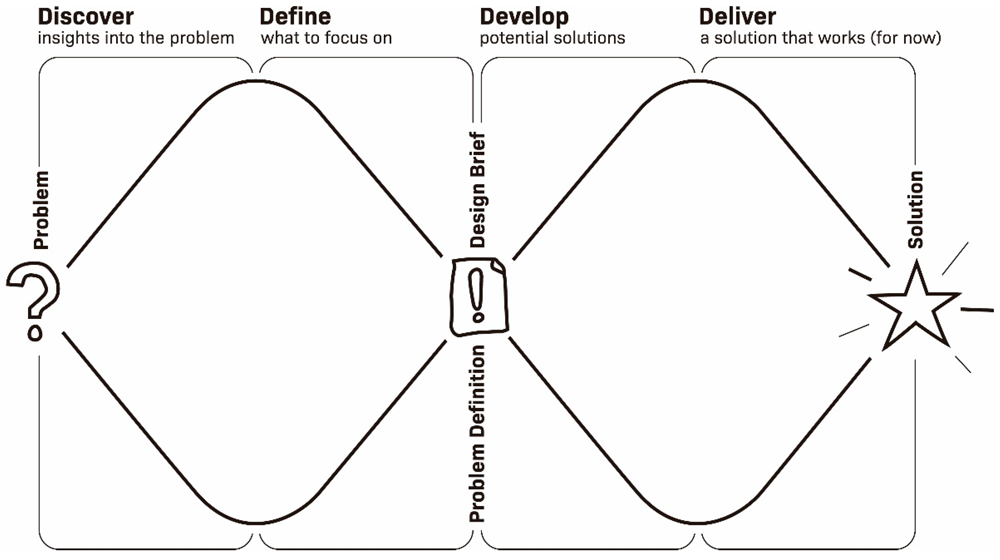
Figure 8. The Double Diamond framework that underpins the course’s approach to socially led sustainable design. Image: Di Ba (adapted from [9]).
4.3. Sustainability-Directed Design Practice Arises from the Sustainability Literacy of the Designer
We therefore seek to raise the sustainability literacy of designers to enable them to redirect their practice towards sustainability goals, to move from partial views to a holistic understanding of sustainability. We quickly establish that there is no such thing as ‘100% sustainable’, and any proposal or intervention we make will be imperfect and contingent on changing conditions. Much self-declared sustainable design is, when scrutinized, either tokenism or greenwash. Critical interrogation of any claims for sustainability is key to approaching a meaningful sense of sustainability. Sustainability literacy arises from an integration of theory and practice and being able to put theory into practice. This is not a course about sustainable design, as an object of study. It is focused on striving to do sustainable design, in terms that can be clearly articulated and justified. A key question here is: What do we want to sustain? Students enter the course with a motivation to work towards sustainability. What this actually looks like requires a deeper examination of the notion of sustainability itself. Whilst a perfect holistic understanding of sustainability may not be possible, we must still strive towards that goal; this is true for tutors and students alike (Figure 9 and Figure 10). The MA Sustainable Design course therefore promotes a healthy scepticism towards all claims of sustainability, as distinct from uncritical celebration and inhibiting cynicism.
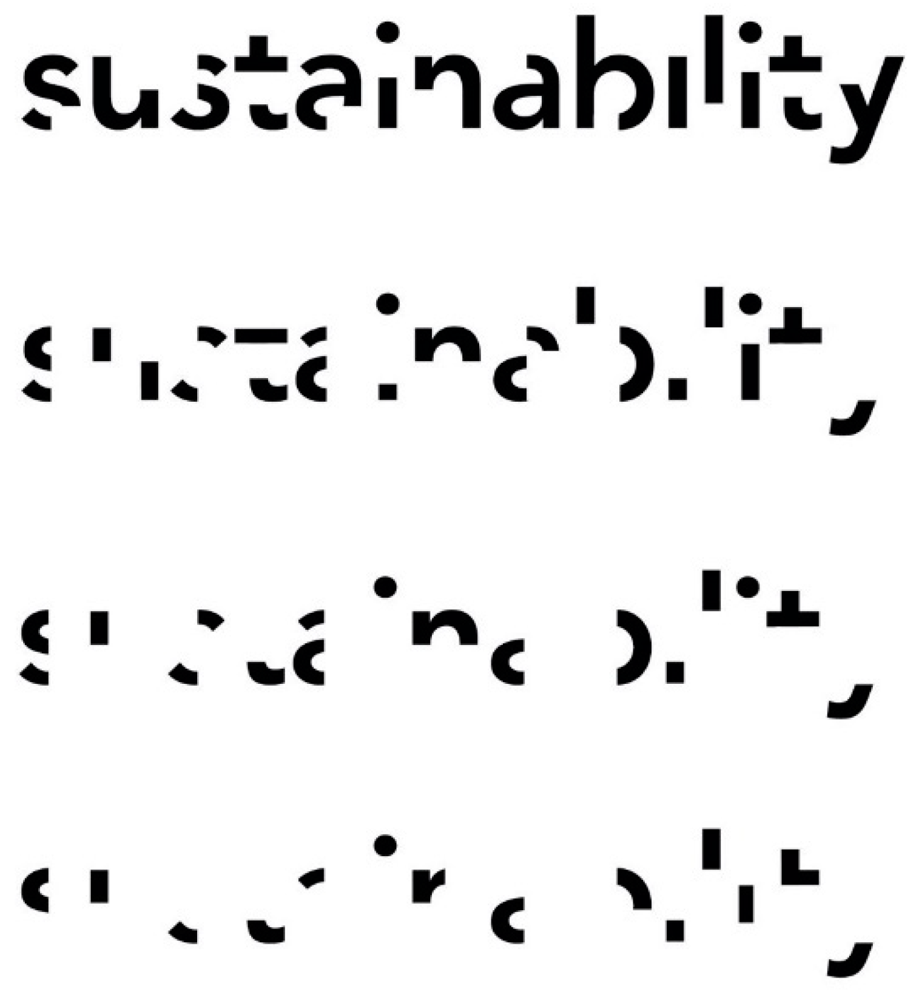
Figure 9. MA Sustainable Design visual identity: moving from partial views to a holistic understanding of sustainability.
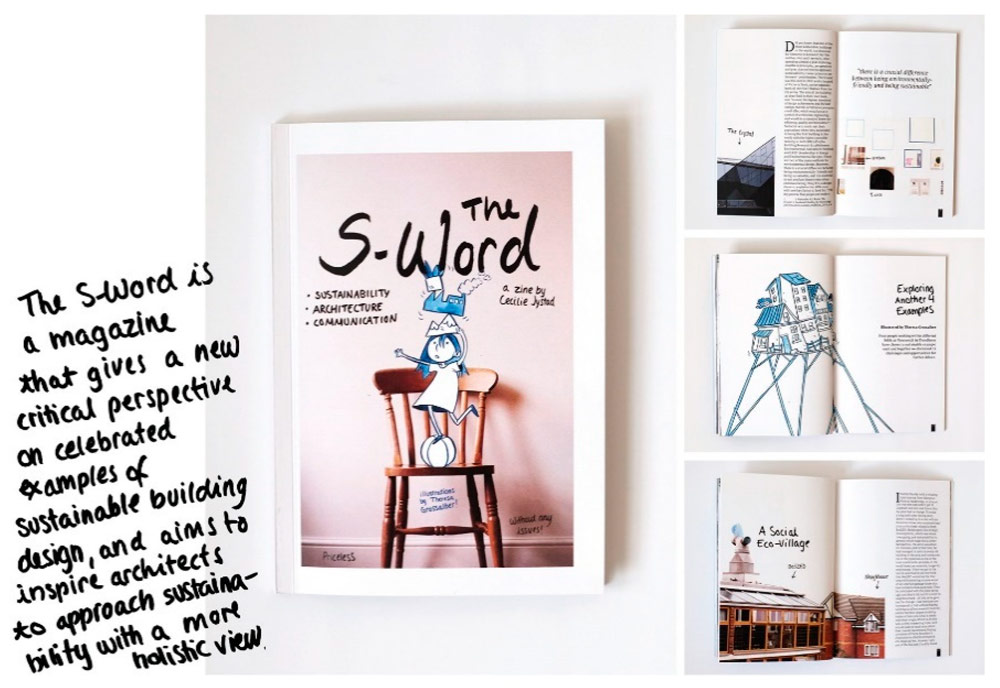
Figure 10. Exploring what holistic sustainability means in the context of building design, via creation of a ‘zine’. (Cecilie Jystad).
4.4. Sustainability Derives from Mindsets and Worldviews, Not Just Methods and Materials
Sustainable design practice is often seen in terms of how we make things. The subtitle of one of the most influential and widely read books of the last twenty years within sustainable design is: ‘Remaking the Way We Make Things’ [10]. We of course also need to consider what we make, and why. An approach to design that only seeks to refine what we make, and how, fails to ask the bigger questions about our material culture and consumption, which sustainability requires. A sustainable product design course will ask its students to design products, sustainably. Watkins et al. discuss such attempts to introduce sustainability to product design courses [11]. The MA Sustainable Design course focuses on the values that can underpin the pursuit of sustainability. Those values must then be translated into principles that inform a design practice that manifests those values. We do not, therefore, begin with a ‘sustainable’ practice and work back to the values it expresses, but rather work towards a sustainability-enabling practice that derives from sustainability-based values. Designing for sustainability means envisioning alternatives to what we take for granted, and these visions must be successfully communicated via storytelling (Figure 11).

Figure 11. MA Sustainable Design visual identity: designers must develop engaging narratives of sustainability, not just present sustainable solutions.
An example of design as speculative storytelling is Great Shitain (Figure 12), which presents the reader with two possible futures: one dystopian, arising from of our current unsustainable society, and the other utopian, delivered through the idea of British consciousness being taken over by a sustainability-focused alien. The project seeks to prompt consideration of the current unsustainability of the trajectory of British society, showing us a better alternative. The style and tone of this narrative is key to its success in addressing a “sustainalby (sic) ignorant nation”.

Figure 12. Great Shitain: design as speculative storytelling. (Dan King).
4.5. Sustainability Is An Emergent Property of Systems, Not a Quality of Products
We take a systems-level approach and look to address the causes, not just symptoms, of unsustainability. This is demonstrated by a student who joined the MA Sustainable Design course immediately from an undergraduate degree in fashion, also at Kingston School of Art. Elisabet Attramadal’s BA Fashion final collection presented a range of garments made using Norwegian wool, an under-valued fibre resource. This made the point that a neglected material had the potential to be taken more seriously. Elisabet’s capstone MA project developed a model for a new Norwegian wool system, in which all stakeholders were included, to enable a more sustainable material economy. This systems-level focus was a natural next step from the object-based approach taken previously. Elisabet’s story also illustrates how a focus on sustainability can emerge in disciplinary-based undergraduate studies, and develop more broadly at a Master’s level. It would not make sense to refine further the approach already taken on her Bachelor’s project. Having demonstrated the principle of using Norwegian wool as a fashion designer, Elisabet sought to address the conditions that could enable others to do the same. The output of this second project was a document; this was not a conventional dissertation, but a report aimed at the main stakeholders in the proposed new Norwegian wool system. Outputs such as this are not always easy to communicate simply nor present at an exhibition. Elisabet’s project was displayed as a copy of the report accompanied by a complete sheep’s fleece; the former is essentially a response to the currently neglected value of the latter. The immediately obvious material qualities and values of the fleece, which visitors were invited to touch, established the need for the contents of the report.
5. How Students Learn
Sustainability as an agenda transcends the boundaries of academic disciplines. Any course devoted to the study and practice of sustainability should address this. A discipline-based approach is most common, for example, developing sustainability-led practice within an established field, such as fashion design. This is likely to lead to attempts at, in this case, ‘sustainable fashion’, within the existing parameters of the discipline. The more ambitious ‘fashion for sustainability’ requires us to challenge those parameters and recognize them as potential contributors to embedded unsustainability. This culminates in the notion that there can be no such thing as ‘sustainable fashion’. Applicants to the MA Sustainable Design course coming from fashion must decide: Do you want to be part of a group of fashion designers, pursuing sustainability within the discipline? Or do you want to potentially be the only fashion designer in a group pursuing sustainability from a wide range of creative perspectives? This question reveals a key feature of the course, namely, how it addresses what has been called “the disciplinary dissolve of design” [12] (p.11). Prospective students sometimes have preconceptions of a particular disciplinary focus, for example, a bias to architecture or product design. The course welcomes designers of all disciplines and backgrounds; each year we assemble a studio of diverse creatives, unified by an appetite to explore how they can collectively explore the territory of sustainability. We then collaborate with staff and students in other Master’s courses in the Design School’s Postgraduate Framework. Students are able to undertake projects led by tutors from other design specialisms, and work with students who have made a commitment to discipline-based study. Whilst we call this ‘interdisciplinarity’, using the familiar term, it is actually ‘pluridisciplinarity’, as designers are cooperating with other, albeit differently disciplined designers: “An understanding is demonstrated of a combination of disciplines that are already related in the various domains within design itself” [12] (p. 12). The requirements for interdisciplinarity are more demanding: “An understanding is demonstrated of at least two disciplinary competencies. One is primary, yet it is able to employ the concepts and methodologies of another discipline. Strengthens understanding of the primary discipline” [12] (p. 12). Individual students on the course are encouraged to embrace any design approach that is useful in addressing the challenges they identify; this is pluridisciplinarity in design.
Kingston School of Sustainability is a pluridisciplinary project requiring students to respond to one or more of a range of provided sustainability challenges relating to Kingston as a university, community or place. Conducted within the foundational module Designing Research, KSS asks students to investigate sustainability locally, developing a proposal for a new speculative Kingston School of Sustainability, to be founded at the University. Trialled by the MA Sustainable Design course, this project has since run within the Postgraduate Framework, a vehicle to bring together students and tutors from several courses on a shared brief. KSS demonstrates how a sustainability-based project can be used to deliver a module that is not sustainability focused. The learning outcomes of Designing Research are generic in that they reward effective use of research to develop a rationale for a design proposal that complements an existing situation. This is a stealthy approach to embedding sustainability into the curriculum of non-sustainability courses, which does not require updating a module’s technical documentation. KSS shows how the MA Sustainable Design course can influence other courses, and pioneer approaches that can then be applied more widely within the institution.
More challenging are collaborations with non-designers. We may invite a non-design specialist into the studio, for example, a marine biologist or sustainable development geographer, to share their perspective and approach to sustainability, and work with us on a generative activity. This fosters multidisciplinarity: “Individuals demonstrate disciplinary competence and understand that their endeavors must be related to the endeavors of others in surrounding disciplines. They therefore come to know and use some concepts used in these disciplines” [12] (p. 11). The MA Sustainable Design course has each year benefitted from the involvement of the university’s central sustainability team in, for example, developing briefs, participating in reviews and advising on specific projects. This brings institutional perspective on the real-world applicability of student proposals. Particularly valuable in this regard has been the contribution of the university’s Biodiversity Manager, who brings expertise and enthusiasm for the notion of ‘nature as client’. Human flourishing is after all interdependent with non-human flourishing.
Yet more ambitious are ‘hackathons’ or ‘jams’ in which MA Sustainable Design students represent design, rather than any discipline within it, in collaboration with others from, for example, geography, information systems, entrepreneurship, nutrition and nursing. Such events are attempts at ‘undisciplinarity’: “Practice shifts from being ‘discipline-based’ to ‘issue- or project-based’. … Here a multitude of disciplines ‘engage in a pile-up of jumbled ideas and perspectives. Undisciplinarity is as much a way of doing work as it is a departure from ways of doing work’” [12] (p. 11). They require careful organization and planning; however, success is not guaranteed. A framework such as the Double Diamond helps to structure the freedom granted from being ‘undisciplined’ and is useful in collaborations with disciplines that do not necessarily self-identity as ‘creative’, but may well be, or aspire to be.
Essential to all attempts to go beyond disciplinary boundaries are (1) open mindedness; and (2) open briefs. The key ‘theory’ module of the course, Sustainable Design Principles, Perspectives and Practices, asks students to produce an ‘essay’ that explores a particular perspective on, or approach to, sustainable design. Out of respect for the experimental origin of the term—“In English essay first meant “a trial” or “an attempt” [13]—this essay can take any form. A student must, therefore, formulate a suitable essay question to provide a response, identify an interested audience for that response and propose an appropriate medium. The module learning outcomes reward critical and discursive engagement with the topic, and the best means to do so may be via an exhibition, a film, a written fiction or a communications campaign, to mention just a few. A conventional analytical academic essay is also allowed. Students are prepared for this task via a programme of sessions that seeks to introduce a variety of topics, perspectives, and approaches. These evolve from year-to-year, in response to developments in sustainable design as a field.
The course content therefore reflects the changing ways in which the world talks about and responds to sustainability, and this informs student outputs. The year of breakthrough youth climate activism, spearheaded by Greta Thunberg, led to an increase in projects with schools and for children. The B Susty programme is designed to support schools to introduce the UN Sustainable Development Goals in complement to their existing curriculum (Figure 13). The project makes direct use of the Good Life Goals, as a relatable and accessible translation of the UN Goals. [14] B Susty was a finalist in the Research with Impact category of the Green Gown Awards 2020, which recognise exceptional sustainability initiatives undertaken by universities and colleges across the world.
Figure 13. B Susty: a programme to support schools to introduce the UN Sustainable Development Goals in complement to their existing curriculum. (Cibele Fontoura).
The increased prominence of the Black Lives Matter movement in 2020, allied to a conscious focus on questions of intersectionality and decolonization, led to students exploring intersections such as ecofeminist fashion and sustainability-led political protest. This was enabled by putting these topics in the curriculum and adding the relevant texts to the required reading [15]. However, these topics and perspectives must also be woven into the course ethos, from the very start of the student journey. To be relevant, a course focusing on sustainability must acknowledge and reflect the engagement with the subject with which students arrive, and seek to relate this to the existing field. Students then explore the wider and historical field via their contemporary entry points. As an example, the following statement was added to the Kingston School of Sustainability project described above: “We encourage you to consider diversity and inclusion in your thinking and proposals—who is it aimed at? who may be excluded? For example, consider criticism of the climate change movement Extinction Rebellion (XR) for its apparent ‘whiteness’”. This request was emphasized in the project briefing and tutoring. A standout resulting output, from an MA Product and Furniture Design student, was A Card for Brown Humanity—a tool to enable conversations about diversity and inclusion in the sustainability industry, and address who or what is blocking the recruitment of people of colour (Figure 14).
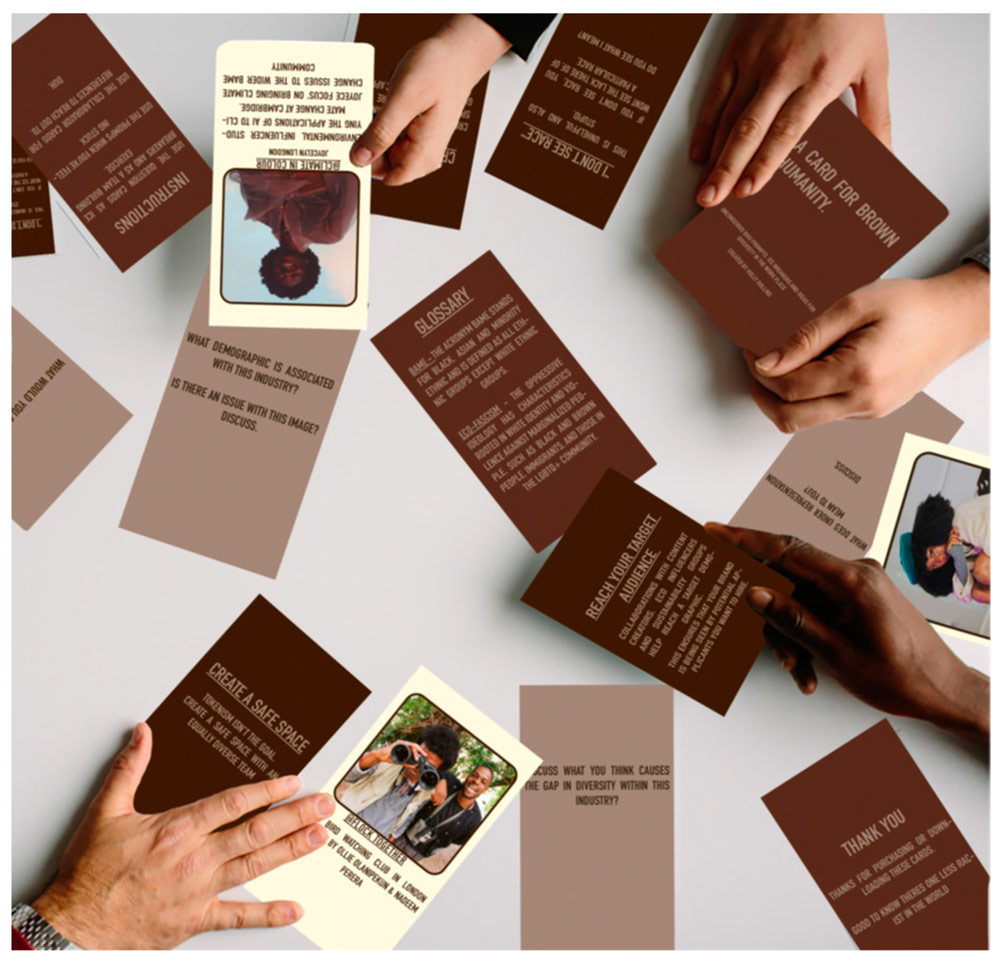
Figure 14. A Card for Brown Humanity—a tool to enable conversations about diversity and inclusion in the sustainability industry. (Holly Rollins, MA Product and Furniture Design).
Students often use the course to examine questions raised by, but not resolved in, their prior studies. The notion of sustainable product design, for example, may have been prominent at the undergraduate level, but can now be critiqued by an understanding that sustainability is an emergent property of systems, not a feature of products. Similar to the Norwegian wool example above, a product design student pursuing sustainability now attends more to the context of how and why products are made. This may mean that they stop designing products for a while, or perhaps for good, as they realise that the answer to a sustainability challenge is not always an object.
If students are asked to approach their practice in new ways, and perhaps abandon their prior certainties, they must be given the confidence to do so. Disciplinary conventions and norms provide security, and so their removal can be challenging. Permission and encouragement to speculate and go beyond existing practice is therefore given from the beginning of the student journey. Speculative Design is introduced as a foundational approach via the work of its originators [16]. Links made by Escobar with pluriversal design, and its acknowledgement within Transition Design [17], help to embed a speculative approach within the practice of designing for sustainability. However, reinforcement is needed to reiterate these connections, and the opportunities that they present to students for bold and speculative sustainability-led creative practice.
Learning is a product of teaching, albeit not all that is taught is learned, and some of what is learned is not ‘taught’. A course dedicated to sustainability must engage with the topic authentically, and not from a distance. The MA Sustainable Design teaching team continue to develop their own sustainability literacy by supporting students on their learning journeys on the course. This is manifest in a flip from research-informed teaching, whereby students are introduced to tutors’ independent research, to teaching-informed research, whereby new knowledge is generated by the collaborations between tutors and students during course delivery.
“Each year a tremendous body of innovative work is produced by students in creative disciplines but little of this is captured as research. Subverting the traditional conception of research informing teaching, Teaching Informed Research (TIR) places project work by undergraduate and postgraduate students at the core of research methodology and explores deeper meanings signified by student projects. It is studio teaching and its associated design processes which lead the research, which become the subject of analysis and interpretation, and which dictate the paths that the research follows” [18].
This is discussed further below in relation to where students learn, but it is worth emphasizing here that the coproduction of knowledge with students, via teaching, is a key feature of the pedagogy of MA Sustainable Design. In my ten years as course leader, my own research outputs are products of my teaching and the discussions and activities undertaken on the course. A course can be an engine of knowledge creation if designed as such.
The pedagogy of MA Sustainable Design is student-led, within structures provided by the modules and their briefs. An example of this is a session exploring the languages of sustainability and design. Each student is assigned a language culture, ideally one with which they have some familiarity, and must present equivalents to the English terms ‘sustainability’, ‘design’ and ‘sustainable design’. This reveals differences in how these notions are conceived and expressed around the world, and how cultural relativism applies to what we might consider to be a universal agenda. Another session assigns each student a role within a structured debate of an example of sustainable design, which allows diverse and competing perspectives to be explored more fully than might be the case if we were discussing from our own positions. The effectiveness of debate as a teaching method capable of fostering competences of critical thinking and sustainability has been assessed positively in engineering students [4]. This accords with the positive experience of using debate as a formal mode of teaching in the MA Sustainable Design course; students declared themselves emboldened to explore the case study (Fairphone) from multiple dimensions, rather than just their own. These session formats are designed to provide just enough structure to enable students to generate the content, and for the group interaction to (we hope) collectively yield insights greater than the sum of our individual understandings.
The course teaching team is supplemented each year by returning recent graduates, who provide continuity between cohorts and reinforce the view that the students are the course. Graduate involvement may take the form of content delivery, membership of review panels, tutorial support or project advice. These arrangements are kept informal, to allow them to be refreshed each year, and ensure that the course evolves from one year to the next. The currency of a course is maintained by contributions from a changing cast, especially when there is a long-standing course leader. Recent graduates supplement the peer group of the current cohort and help to maintain the strong culture of peer support that has characterized the MA Sustainable Design course from its start. The Critical Reflections in which students evaluate their learning on specific modules often discuss what has been gained from interaction with their peers. This collegiate and cooperative course culture is most easily seen as a product of a studio culture, whereby working in a shared space engenders a socialized mode of learning.
6. Where Students Learn
MA Sustainable Design is a studio-based course. This means most of the teaching takes place in flexible spaces, within proximity to technical workshops. A room is of course activated as a studio by what happens within it, and teaching sessions vary in format from highly structured and prepared, to very open and generative, as in the examples discussed above; “A design studio can be an especially dynamic medium from which to have a strong position on, and test the productive potential of, sustainability” [19] (p. 186). The campus spatial ecosystem of a studio, workshop and library is intended to provide the basis for students to attain a creative course’s learning outcomes. When additional emphasis is placed on engaging with wider audiences, and the participation of communities, much learning additionally takes place off-site. MA Sustainable Design students are therefore supported to identify locations they can use to access participants, for example, care homes and open-air markets [20] (Figure 15). They are sometimes required to create specific places for participation, via collaborative workshops or pop-up events.
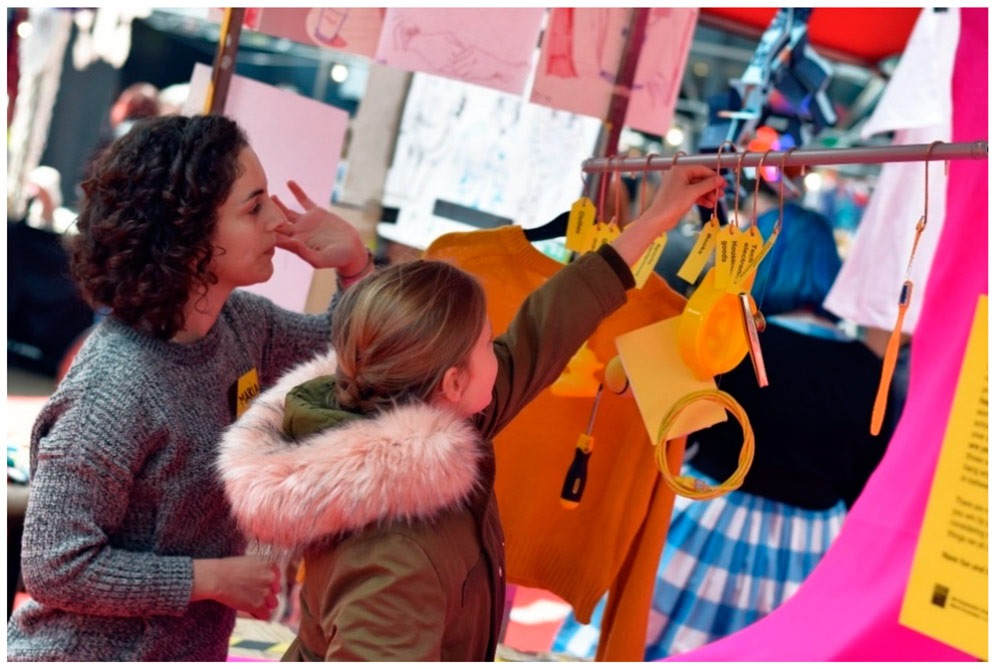
Figure 15. Participatory primary research into product shareability, conducted in Old Spitalfields Market, London (Maria Marinovic).
MA Sustainable Design was invited to deliver a series of two workshops with Kingston-based Arts and Health service providers, supported by The Royal Borough of Kingston upon Thames (RBK) and The Rose Theatre, Kingston. The first was led by me, as course leader, with student assistance. This involved designing a format and materials for a participatory event in which nine local service providers pooled their knowledge and resources to establish a shared position from which to collaboratively develop new public services. The second workshop was student-led, and a team effort across the course [21]. This demonstrates how we work towards the course becoming a ‘community of practice’ in which students become the masters of their own learning trajectory, framed by the course’s submission and assessment requirements [22].
MA Sustainable Design devised and delivered ‘Climate Customs’—an open pop-up studio in Oxo Tower Wharf during London’s Inside Out festival. Conceived and developed in association with the Helen Storey Foundation, the studio aimed to test ways of capturing public responses to climate change and sustainability (Figure 16 and Figure 17). The collaboration with HSF on this ‘live’ project applied some useful pressure to students’ learning experience by requiring them to deliver an outcome that succeeded in relating to members of the public. Climate Customs was also an example of teamworking—students and staff worked together to deliver the outcome within a course module, and students were assessed individually on their contributions to the collective project [23].
Figure 16. ‘Climate Customs’—an open pop-up studio in Oxo Tower Wharf during London’s Inside Out festival.
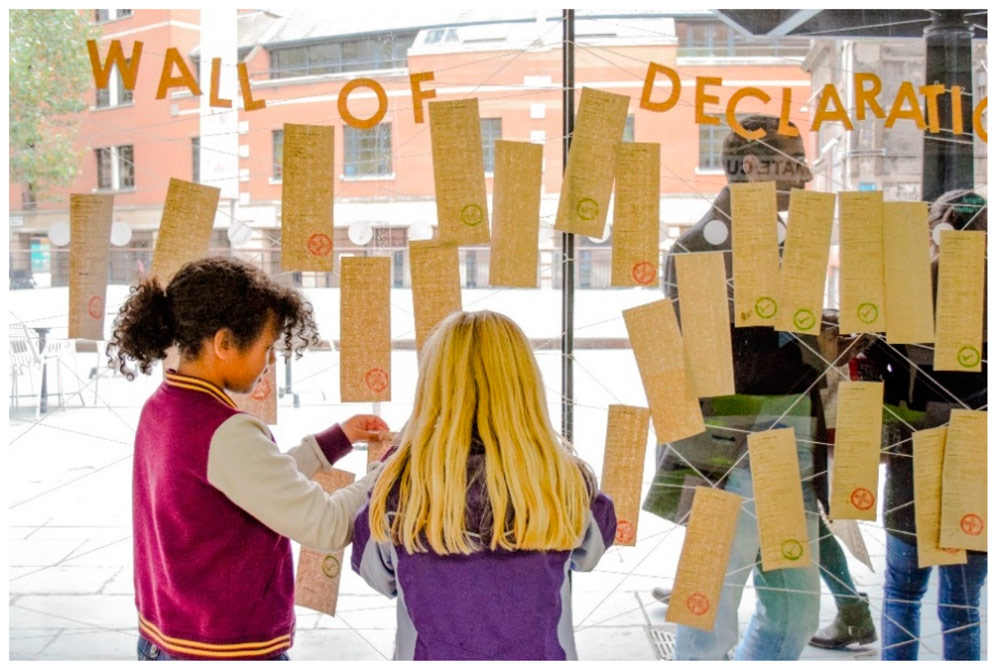
Figure 17. ‘Climate Customs’—an open pop-up studio in Oxo Tower Wharf during London’s Inside Out festival.
Live projects with collaborating partner organisations bring real-world relevance to students’ learning experiences. Such projects also bring welcome constraints, requiring students to work within parameters they have not chosen. An example is the Tolworth for the Long Time project, which combined an RSA Student Design Awards brief with a local community development organization. The RSA brief provided the framework of designing for the long term, and the community partner brought a specific location on which students were required to focus. This degree of control was imposed in response to the short duration of the project. It also forced students to engage with an under-recognised place and community. Hoinle et al. [24] identify the merits of cooperation between university and non-academic regional partners for sustainability education as being awareness and network building. In the case of this collaboration, a graduate from the course is now employed by the organisation as a service designer.
The importance of the idea of a studio as a ‘sustainable space’ that manifests the principles being explored through the practices it enables, is examined by Manfredi et al. [25], and considered by Gurel. “… the studio itself was declared a ‘sustainable environment’, with the belief that our behaviour reflects our values and affects the way we think and produce. Recycling bins were located inside this and other studios and a corner was assigned to store scrap material/boards for reuse” [26] (p. 188). The MA Sustainable Design studio is furnished entirely with surplus university furniture, and we seek to minimise the material impacts of our studio and exhibition practices via an internal circular economy.
Students can also learn a great deal outside the course and its programme. Participation in extra-curricular activities cannot be enforced, but it can be secured with the right encouragement and planning. The ‘hackathons’ or ‘jams’ discussed above, in which students collaborate with others from across the university, have been offered on this basis. An active course culture, led by well-chosen and well supported student representatives, can also yield useful self-initiated activities, such as participation in networking events, which the course itself could not incorporate. While it is useful for tutors to make students aware of additional events or opportunities, we do not need to be aware of everything that students attend or do that augments their studies. This supplementary or ‘shadow’ curriculum can inform students’ work for the course, sometimes as much as the course content.
7. Conclusions
This paper presents an example of seeking to deliver what is asked for by the new Education for Sustainable Development Guidance published in the UK in March 2021 by QAA and Advance HE [1]. The MA Sustainable Design at Kingston School of Art can perhaps be viewed as a model, as long as it is placed in its proper context within the creative arts. Concluding reflections are presented here as a way of considering the potential broader transferability or translatability of the approach described above.
The MA Sustainable Design was created and has evolved as a postgraduate course. Every student who joins MA Sustainable Design has a creative practice, usually developed via an undergraduate degree in design, and often in professional practice. This creative practice is demonstrated by a portfolio submitted as part of the application to join the course. In addition, an applicant is required to demonstrate an appetite for directing their practice towards sustainability goals, the nature of which are developed during the course. Similarly, the course’s focus on ‘interdisciplinarity’ of different modes makes sense as each student already has a discipline from which to deviate. The exploration of sustainability in the course therefore follows prior training and experience in unsustainability. This supports a finding of an earlier study: “… students are also aware that meaningful application of sustainable concepts to a design project requires attaining broad knowledge in their field and developing critical lenses through which they can evaluate pitfalls of sustainability” [19] (p. 197).
Sterling, already cited above, states: “sustainable education is essentially transformative, constructive, and participatory …” [3] (p. 35). We might add that it must also be creative, in which case all sustainable education, in Sterling’s terms, might take something from what has been presented here. Design is a broad territory. If we then ally this to sustainability, a cross-cutting agenda that constitutes an imperative for all disciplines, we can argue that all education might benefit from seeing itself as design education, and learnings from teaching sustainable design can be useful to all other subject areas.
Incoming students to MA Sustainable Design often see the course title as a promise of forthcoming revelation; but we do not have the answers readymade.
“The reality of developing competency in Design for Sustainability is demonstrably more complex than ‘doing’ a design project, fulfilling a brief, or listing a set of desired learner characteristics. For all, or some, of the competencies to be attained to any level designers must be given the correct contexts and opportunities for restructuring old and acquiring new knowledge”.
[26] (p. 606)
The sequence of modules and their learning outcomes represents the general student journey as it exists on paper. The phenomenological and psychological experience of the students taking the course emerges through their own individual engagement with this modular journey. The ‘trough’ that students often encounter in the middle part of the course represents the loss of initial hopefulness and an acceptance of the not-knowing and uncertainty that accompanies taking sustainability seriously. While this can be challenging for students to accept, and overcome, it is a necessary realization on their journey to becoming a sustainability-literate, creative practitioner (Figure 18). The two testimonials below from MA Sustainable Design graduates capture the student experience.
Figure 18. MA Sustainable Design 2017 18 visual identity: navigating a route through the complexity of sustainability as a designer, to identify constellations of opportunities.
“The way sustainability is addressed in this course is holistic and goes far beyond the lecture slides and usual green cliches. Students reflect on different ways in which they can contribute to tackling the biggest problem of our time—enhancing the well-being of people whilst protecting the environment, in a positive and thoughtful way. The course leader took the class on a journey of deep reflection and learning, prompting passionate debates, for which we needed to read, research a lot and, of course, also design. My fellow students were also professionals with thriving creative careers, which contributed to a very fruitful environment for collaboration”.
(Maria Marinovic)
“The course was more than what I expected—a professional and personal growth. It was an intense year where I had the chance to deconstruct the concept I had of sustainability and social innovation, and then rebuilt and reframe it with a new postmodern perspective. The course made me skilled with different social design and social research methodologies, ethnographic methods, service design tools, human centered and participatory design approaches, as well as developing sustainability literacy. It really helped me to understand my role as a designer, and what I can offer. During the course, me and my classmates often discussed the right name for our future job position. We identified ‘social and local designer’. The Sustainable Design MA showed me the right path to follow in order to bear that title”.
(Giuliana Gheza)
Acknowledgments
Anne Chick founded MA Design for Development and was the course leader from 2008–2011, at which point Paul Micklethwaite took on the role, and oversaw the name change to MA Sustainable Design in 2013. Paul contributed to the development of the course, and its delivery prior to becoming course leader. He acknowledges the formative role of Anne in designing and establishing the course that is discussed in this paper. Images used in this paper include visual identities developed for MA Sustainable Design shows and publications, created by students under the direction of the author as course leader. Student project outputs are shown with credit to the students who studied towards an MA Sustainable Design, unless stated otherwise. Anke Jakob teaches in the MA Sustainable Design course, and provided feedback on this article prior to submission.
References
-
-
Franco, I.; Saito, O.; Vaughter, P.; Whereat, J.; Kanie, N.; Takemoto, K. Higher education for sustainable development: Actioning the global goals in policy, curriculum and practice. Sustain. Sci. 2019, 14, 1621–1642. [Google Scholar] [CrossRef]
-
Sterling, S. Sustainable Education: Revisioning Learning and Change; Schumacher Briefing No. 6; Green Books: Totnes, UK, 2001. [Google Scholar]
-
Rodriguez-Dono, A.; Hernández-Fernández, A. Fostering Sustainability and Critical Thinking through Debate—A Case Study. Sustainability 2021, 13, 6397. [Google Scholar] [CrossRef]
-
Ceschin, F.; Gaziulusoy, I. Evolution of design for sustainability: From product design to design for system innovations and transitions. Des. Stud. 2016, 47, 118–163. [Google Scholar] [CrossRef]
-
Décamps, A.; Barbat, G.; Carteron, J.-C.; Hands, V.; Parkes, C. Sulitest: A collaborative initiative to support and assess sustainability literacy in higher education. Int. J. Manag. Educ. 2017, 15, 138–152. [Google Scholar] [CrossRef]
-
Smith, C. Design for the Other 90 Percent; Cooper-Hewitt National Design Museum: Chicago, IL, USA, 2008. [Google Scholar]
-
-
-
McDonough, W.; Braungart, M. Cradle to Cradle: Remaking the Way We Make Things; North Point Press: New York, NY, USA, 2002. [Google Scholar]
-
Watkins, W.; Casamayor, J.L.; Mariale Moreno, M.R.; Faludi, J.; Pigosso, D. Sustainable Product Design Education: Current Practice. She Ji J. Des. Econ. Innov. 2021, 7, 611–637. [Google Scholar] [CrossRef]
-
Bremner, C.; Rodgers, P. Design Without Discipline. Des. Issues 2013, 29, 4–13. [Google Scholar] [CrossRef]
-
-
World Business Council for Sustainable Development (WBCSD). Good Life Goals. Available online: https://sdghub.com/goodlifegoals/ (accessed on 15 December 2021).
-
Escobar, A. Designs for the Pluriverse: Radical Interdependence, Autonomy, and the Making of Worlds; Duke University Press: Durham, NC, USA, 2018. [Google Scholar]
-
Dunne, A.; Raby, F. Speculative Everything: Design, Fiction and Social Dreaming; MIT Press: Cambridge, MA, USA, 2013. [Google Scholar]
-
-
-
Gürel, M.Ö. Explorations in teaching sustainable design: A studio experience in interior design/architecture. Int. J. Art Des. Educ. 2010, 29, 184–199. [Google Scholar] [CrossRef]
-
Micklethwaite, P.; O’Connor, K.; Elliott, S. Market as Manufactory. Making Communities. Des. J. 2019, 22, 1267–1285. [Google Scholar] [CrossRef]
-
Torres, R.; Micklethwaite, P. Activating the core economy by design. In Proceedings of the DRS2016: Design + Research + Society: Future-Focused Thinking, Brighton, UK, 27–30 June 2016. [Google Scholar] [CrossRef]
-
Wenger, E. Communities of Practice: Learning, Meaning, and Identity; Cambridge University Press: Cambridge, UK, 1998. [Google Scholar]
-
Micklethwaite, P.; Knifton, R. Climate Change. Design Teaching for a New Reality. Des. J. 2017, 20 (Suppl. S1), S1636–S1650. [Google Scholar] [CrossRef]
-
Hoinle, B.; Roose, I.; Shekhar, H. Creating Transdisciplinary Teaching Spaces. Cooperation of Universities and Non-University Partners to Design Higher Education for Regional Sustainable Transition. Sustainability 2021, 13, 3680. [Google Scholar] [CrossRef]
-
Manfredi, L.R.; Stokoe, M.; Kelly, R.; Lee, S. Teaching Sustainable Responsibility through Informal Undergraduate Design Education. Sustainability 2021, 13, 8378. [Google Scholar] [CrossRef]
-
McMahon, M.; Bhamra, T. Mapping the journey: Visualising collaborative experiences for sustainable design education. Int. J. Technol. Des. Educ. 2017, 27, 595–609. [Google Scholar] [CrossRef]
